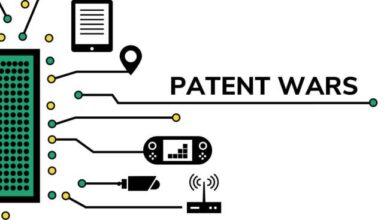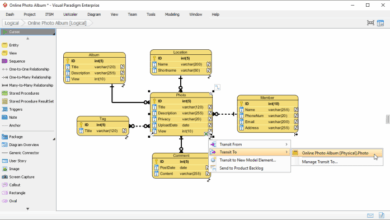
Fighting for intellectual property is crucial in today’s innovative landscape. This exploration delves into the multifaceted world of IP rights, from defining their various forms to the strategies for protection and enforcement. We’ll examine the legal frameworks, the role of technology, and the future trends shaping the landscape of intellectual property.
The journey begins by understanding the core concepts of patents, copyrights, trademarks, and trade secrets. We’ll then explore proactive protection measures, legal enforcement strategies, and the challenges that arise in a globalized world. This includes case studies, analyzing the impact of technology, and ultimately considering the future of IP in a rapidly changing technological environment.
Defining Intellectual Property Rights
Intellectual property (IP) rights are legal protections granted to creators and inventors for their original works and inventions. These rights allow them to control the use, distribution, and exploitation of their creations, fostering innovation and creativity while incentivizing further development. IP rights are crucial for the economic growth of individuals and nations. They safeguard the fruits of intellectual labor, ensuring that creators are compensated for their efforts and encouraging them to invest in further creative endeavors.Understanding IP rights is vital for anyone involved in commerce, industry, or the arts.
These rights protect a wide array of creative expressions and technical advancements, ensuring that innovation is rewarded and that the public benefits from the progress of human ingenuity.
Types of Intellectual Property Rights
Intellectual property rights encompass various categories, each with distinct characteristics and legal frameworks. These rights are essential for protecting a wide range of creations and inventions.
Patents
Patents grant exclusive rights to inventors for their inventions, allowing them to prevent others from making, using, or selling the invention for a set period. This incentivizes innovation by rewarding inventors for their ingenuity and investment in research and development. Different types of patents exist, including utility patents for inventions, design patents for the ornamental aspects of an invention, and plant patents for new varieties of plants.
The duration of patent protection varies depending on the jurisdiction and the type of patent.
Copyrights
Copyrights protect original works of authorship, such as literary, dramatic, musical, and certain other intellectual works. This protection encompasses the expression of an idea, not the idea itself. Copyright protection extends to the tangible expression of the idea, granting the creator exclusive rights to reproduce, distribute, display, and perform the work. Copyright is automatically granted upon creation of the work, and registration can further strengthen the legal protection.
Trademarks
Trademarks protect distinctive signs, designs, or expressions that identify and distinguish goods or services of one party from those of others. These marks can be words, phrases, logos, or symbols. Trademarks are crucial for consumers to identify and differentiate between products and services, fostering trust and confidence in the market. Strong trademarks can build brand recognition and value.
Trade Secrets
Trade secrets are confidential information that provides a business with a competitive edge. This information could include formulas, practices, designs, instruments, or a compilation of information. Protecting trade secrets involves maintaining confidentiality and taking reasonable steps to prevent disclosure. The legal protection of trade secrets often hinges on the element of secrecy.
Table of Intellectual Property Rights
| Type | Description | Key Characteristics |
|---|---|---|
| Patents | Exclusive rights granted to inventors for their inventions. | Protects inventions, incentivizes innovation, limited time period. |
| Copyrights | Protects original works of authorship. | Protects expressions, not ideas, automatic protection, registration strengthens rights. |
| Trademarks | Protects distinctive signs for goods or services. | Builds brand recognition, fosters consumer trust, differentiates products. |
| Trade Secrets | Confidential information providing a competitive edge. | Based on secrecy, ongoing effort to maintain confidentiality. |
Legal Frameworks Governing IP Rights
The legal frameworks for IP rights vary across jurisdictions. Each country has its own laws and regulations governing the protection and enforcement of IP rights. International treaties, such as the Paris Convention for the Protection of Industrial Property and the Berne Convention for the Protection of Literary and Artistic Works, establish standards and harmonization in IP rights protection across borders.
Understanding these frameworks is crucial for navigating the complex landscape of IP rights.
Protecting Intellectual Property
Protecting intellectual property (IP) is crucial for fostering innovation and creativity. Companies and individuals invest significant time and resources in developing new ideas, products, and processes. Without robust IP protection, these investments can be easily exploited by others, hindering progress and diminishing the rewards for creators. This section delves into strategies for safeguarding IP rights, highlighting the importance of proactive measures, and outlining the steps involved in securing these rights.
Strategies for Protecting IP Rights
Protecting intellectual property involves a multi-faceted approach tailored to the specific type of IP and the industry context. This encompasses a range of strategies, including registration, licensing, and enforcement. Each strategy plays a vital role in deterring infringement and ensuring the creator’s rights are upheld.
- Registration: Formal registration of intellectual property rights, such as patents, trademarks, and copyrights, establishes legal ownership and provides a public record of the claim. This formalization is critical for establishing a strong claim against potential infringers.
- Licensing: Licensing agreements allow others to use the protected IP under specific terms and conditions. This approach can be advantageous for creators who want to leverage their IP without bearing the full burden of commercialization. Careful consideration of licensing terms, including royalty rates, territory, and duration, is essential.
- Enforcement: When IP infringement occurs, a proactive approach to enforcement is critical. This may involve cease-and-desist letters, legal action, or other means to stop the infringement and seek compensation for damages. Swift and decisive action can deter future infringement and protect the value of the IP.
Importance of Proactive IP Protection Measures
Proactive IP protection measures are not just about reacting to infringement but about safeguarding IP from the outset. This involves a proactive approach to IP identification, documentation, and registration. This approach fosters a culture of IP awareness within the organization and ensures that all relevant parties are aware of and understand their responsibilities in protecting IP.
- Early Identification: Identifying potential IP assets early on, whether it’s a new invention, a unique design, or a novel software algorithm, allows for timely registration and protection.
- Thorough Documentation: Maintaining detailed records of the creation process, development stages, and modifications of IP assets is critical for establishing ownership and demonstrating originality.
- Comprehensive Registration: Registering all relevant IP rights in jurisdictions where the IP is used or intended to be used provides maximum protection and reduces the risk of infringement.
Steps Involved in Securing IP Rights
Securing IP rights is a process involving several key steps, from initial identification to formal registration. This process varies depending on the specific type of IP being protected.
- Identification of IP Assets: This initial step involves recognizing and documenting the various intellectual property assets within a company or individual’s portfolio.
- Due Diligence: Conducting thorough research to ensure that the IP is truly novel and not already protected by existing rights is critical.
- Formal Application: Filing the necessary applications with the relevant IP offices, providing all required documentation and supporting evidence.
- Registration and Grant: The final step involves receiving the formal registration documents, confirming the protection granted.
Examples of Successful IP Protection Strategies
Numerous examples demonstrate the efficacy of proactive IP protection. The success of companies like Apple, with its strong trademark protection for its brand and product designs, and the development of pharmaceutical giants like Pfizer, which secures patents for their innovative drugs, illustrate the significant impact of IP protection.
IP Protection in Specific Industry Sectors
- Software: Software companies frequently utilize patents to protect innovative algorithms and processes. Trademarks are vital for brand recognition and consumer association with particular software products.
- Pharmaceuticals: The pharmaceutical industry heavily relies on patents to protect the rights to their inventions. These patents cover the use of new drug compounds and methods for their administration. The complex regulatory environment necessitates a multi-faceted approach to protection.
- Design: Design patents are often employed to protect original designs for products. Companies like Nike, for example, utilize this to protect the aesthetic appeal of their footwear. Trademarks are also frequently used to protect the brand identity of design-focused businesses.
Comparison of IP Protection Strategies
| Strategy | Description | Advantages | Disadvantages |
|---|---|---|---|
| Patents | Exclusive rights to an invention | Strong protection, high barriers to entry | High cost, long process, limited scope |
| Trademarks | Distinctive brand identification | Builds brand recognition, creates market differentiation | Requires constant monitoring, potential for challenges |
| Copyrights | Protection of original works of authorship | Protects creative expression, broad applicability | Does not protect underlying ideas |
Enforcement of Intellectual Property Rights

Protecting intellectual property (IP) is only half the battle. Effective enforcement is crucial to deterring infringement and ensuring creators and innovators receive the rewards for their work. Strong enforcement mechanisms create a level playing field and foster a more robust and innovative ecosystem. This crucial aspect of IP law protects legitimate businesses and individuals from unauthorized use and exploitation of their creations.Enforcement of intellectual property rights involves a range of methods and legal actions designed to stop infringement and compensate victims.
It’s a complex process, often involving legal battles, international cooperation, and careful consideration of procedural steps. A robust system of enforcement ensures that the rights granted by IP laws are meaningful and provide protection to the holders of those rights.
Methods for Enforcing IP Rights
Various methods exist for enforcing IP rights, each with its own advantages and limitations. These methods range from informal negotiations to formal legal proceedings. The selection of a specific method depends on the nature of the infringement, the resources available, and the desired outcome.
- Cease and Desist Letters: These letters are often the initial step in addressing IP infringement. They serve as a formal notification to the alleged infringer that their actions violate the IP holder’s rights and demand immediate cessation of the infringing activity. These letters are effective in resolving many minor cases quickly and without extensive legal action. They provide a clear communication channel and an opportunity for a quick resolution.
- Lawsuits: If cease and desist letters are ineffective, a lawsuit may be necessary. This legal action allows the IP holder to seek remedies in a court of law, such as injunctions, damages, and/or the destruction of infringing goods.
- Administrative Procedures: Some IP rights, like trademarks, may involve administrative procedures for enforcement. These procedures often involve filing complaints with the relevant governmental agency, which then investigates and takes action to protect the IP right.
Legal Actions and Remedies Available for IP Infringement
Several legal actions and remedies are available to IP holders when faced with infringement. The choice of action depends on the specific circumstances of the case and the desired outcome.
- Injunctions: These court orders prevent the infringer from continuing the infringing activity. They are crucial in stopping further harm and maintaining the status quo. Injunctions can be temporary or permanent, depending on the circumstances.
- Damages: These monetary awards compensate the IP holder for the losses suffered due to the infringement. They can include lost profits, costs of litigation, and other expenses.
- Account of Profits: This remedy requires the infringer to account for the profits they gained from the infringement. It ensures that the infringer does not profit from their illegal activities.
- Destruction of Infringing Goods: This remedy involves the court ordering the destruction of any infringing products or materials to prevent further distribution and sale.
Role of International Agreements in IP Enforcement
International agreements play a vital role in facilitating IP enforcement across borders. These agreements establish common standards and procedures for handling IP infringement cases internationally, fostering cooperation among countries and facilitating the resolution of cross-border disputes.
- The Agreement on Trade-Related Aspects of Intellectual Property Rights (TRIPS): This agreement establishes minimum standards for IP protection and enforcement, promoting consistency in IP rights across member countries. It provides a framework for resolving disputes between countries concerning IP rights.
Procedures for Filing an Infringement Claim
The process for filing an infringement claim varies depending on the type of IP right and the jurisdiction. Generally, it involves gathering evidence, preparing legal documents, and presenting the case in court.
- Evidence Gathering: This stage involves collecting all relevant evidence, including documentation of the IP right, proof of infringement, and any other relevant information.
- Filing a Complaint: A formal complaint is filed with the court, outlining the claims of infringement and seeking the appropriate remedies.
- Discovery: This process allows both sides to gather information from each other, preparing for the trial.
- Trial and Judgement: The court hears evidence and arguments from both sides and issues a judgement.
Real-World Examples of Successful IP Enforcement Cases
Numerous successful IP enforcement cases demonstrate the effectiveness of these measures. These cases often involve significant financial settlements and injunctions against infringing parties. For example, cases related to the protection of pharmaceutical patents or copyright protection of popular music have demonstrated the strength and impact of IP enforcement.
Table of Legal Remedies for IP Infringement
| Remedy | Description |
|---|---|
| Injunction | Court order preventing further infringement |
| Damages | Monetary compensation for losses |
| Account of Profits | Recovery of profits gained from infringement |
| Destruction of Infringing Goods | Destruction of infringing products |
Challenges and Disputes in Intellectual Property
Navigating the complex world of intellectual property (IP) often leads to disputes. From disagreements over ownership to challenges in enforcement, protecting and asserting IP rights can be fraught with difficulties. This post delves into the common obstacles and how they are addressed. Understanding these challenges is crucial for anyone involved in creating, using, or licensing IP.The landscape of intellectual property is constantly evolving, influenced by technological advancements and global trade.
This dynamic environment fosters innovation but also creates new avenues for disputes. Addressing these challenges requires a nuanced understanding of the legal frameworks, practical strategies, and international perspectives surrounding IP protection.
Common Challenges in Protecting and Enforcing IP Rights, Fighting for intellectual property
Protecting intellectual property rights can be difficult due to factors like counterfeiting, infringement, and the sheer complexity of IP law. Identifying and proving infringement can be challenging, particularly in digital environments where unauthorized copying and distribution are readily possible. The high cost of litigation and the time it takes to resolve disputes are significant hurdles for smaller entities.
Common IP Disputes and Their Resolutions
Intellectual property disputes arise from various sources, including patent disputes over inventions, trademark conflicts over brand names, and copyright conflicts over creative works. These disputes often involve complex legal and factual issues that necessitate thorough investigation and expert analysis. Common resolutions include licensing agreements, settlements, and court judgments. Mediation and arbitration are increasingly popular alternatives to litigation.
Role of IP Arbitration and Mediation in Resolving Disputes
IP arbitration and mediation offer faster and often more cost-effective means of resolving disputes than traditional litigation. Arbitration involves a neutral third party making a binding decision, while mediation facilitates negotiation between parties to reach a mutually acceptable resolution. The expertise of arbitrators and mediators in IP law is crucial for achieving fair and effective outcomes. Arbitration, especially, can be faster than litigation and more confidential, making it attractive to businesses.
Impact of Globalization on IP Rights
Globalization has expanded the scope of intellectual property protection but also introduced new challenges. International trade agreements and treaties aim to harmonize IP laws across countries, but enforcement varies significantly. This inconsistency makes it challenging to protect IP rights globally, especially in jurisdictions with weaker IP enforcement mechanisms. The rise of the internet and e-commerce has further complicated the landscape, with counterfeit goods and pirated content easily disseminated across borders.
Comparison of Approaches to Resolving IP Disputes Across Jurisdictions
Different jurisdictions have distinct approaches to resolving IP disputes. Some favor litigation, while others rely more heavily on arbitration or mediation. Factors such as the legal tradition, cultural norms, and the strength of the IP enforcement infrastructure play a role. Understanding these differences is essential for businesses operating internationally.
Different Types of IP Disputes and Potential Solutions
| Type of IP Dispute | Potential Solutions |
|---|---|
| Patent infringement | Litigation, licensing agreements, settlements, injunctions, damages |
| Trademark infringement | Litigation, cease-and-desist letters, settlements, injunctions, damages |
| Copyright infringement | Litigation, takedown notices, licensing agreements, settlements, injunctions, damages |
| Trade secret misappropriation | Litigation, injunctions, damages, confidentiality agreements |
The Role of Technology in Protecting Intellectual Property: Fighting For Intellectual Property

Technology is rapidly transforming the landscape of intellectual property (IP) protection, offering unprecedented tools for safeguarding creations and combating infringement. From sophisticated monitoring systems to advanced management platforms, technology has become an indispensable ally in the fight for IP rights. This evolution has significantly impacted how IP is protected, managed, and enforced.
Protecting intellectual property is crucial, especially in today’s market. Companies like Amazon are constantly expanding, and a recent acquisition spree, like the one detailed in amazon com goes on shopping spree , raises questions about fair competition and the potential for monopolization. This highlights the importance of ongoing vigilance in ensuring that innovation isn’t stifled by corporate consolidation and that independent creators are fairly compensated for their work.
Impact of Technology on IP Protection Landscape
Technology is dramatically altering the traditional methods of IP protection. Digitalization has led to the creation of vast online repositories of creative works, simultaneously expanding opportunities for exploitation and increasing the need for robust protection mechanisms. The ease with which digital content can be copied and distributed has necessitated the development of innovative technological solutions to combat piracy and counterfeiting.
Technology for Monitoring and Detecting IP Infringement
Advanced surveillance technologies are critical in detecting and preventing IP infringement. Digital watermarking, a process of embedding unique identifiers into digital files, allows for the tracing of unauthorized copies. Sophisticated image recognition software can swiftly identify counterfeit products by comparing them to registered designs. This proactive approach to monitoring significantly reduces the impact of infringement by allowing for early intervention and rapid response.
Technology Facilitating IP Management and Tracking
Effective IP management is crucial for protecting and maximizing the value of creations. Cloud-based platforms facilitate centralized storage and access to IP assets, providing secure and easily accessible data for authorized users. Digital databases can meticulously track ownership, licensing agreements, and usage rights, enhancing transparency and accountability. This streamlines the management process, reducing potential conflicts and errors.
Technology Evolving IP Protection and Enforcement Methods
Technology has significantly evolved the methods of IP protection and enforcement. The use of AI-powered systems can analyze vast amounts of online data to identify patterns of infringement. Automated processes for tracking and tracing counterfeit goods enable swift intervention. Furthermore, blockchain technology provides secure and transparent records of IP ownership and transactions, increasing trust and preventing fraudulent claims.
This has created a more robust and dynamic IP protection system.
Technology-Driven IP Protection Process Flow Chart
The following flowchart illustrates the key steps in a technology-driven IP protection process:
+-----------------+ | IP Creation | +-----------------+ | | | Registration |-----> Database Entry +-----------------+ | | | Monitoring/AI |-----> Infringement Detection +-----------------+ | | | Enforcement/Legal Action | +-----------------+
This flowchart demonstrates the cycle from creation to enforcement, highlighting the role of technology in each stage.
The IP is registered, and the technology is utilized for monitoring, detecting, and subsequently enforcing IP rights. This automated process enables faster responses to potential infringements and more efficient management of IP assets.
The Future of Intellectual Property
The landscape of intellectual property (IP) is constantly evolving, shaped by technological advancements and shifting societal norms. Understanding these trends is crucial for businesses and individuals seeking to protect their creations and navigate the complexities of the IP world. This exploration delves into the future of IP rights, examining how technology, artificial intelligence, and global interconnectedness are reshaping the way we define, protect, and enforce intellectual property.
Future Trends in IP Rights and Enforcement
Emerging trends in IP rights and enforcement reflect a dynamic interplay between legal frameworks and technological innovation. International cooperation and harmonization of IP laws are vital to address the complexities of cross-border IP issues in a globalized world. Enforcement mechanisms are adapting to address the challenges of counterfeiting and piracy in the digital age, requiring robust technological tools and international collaboration.
Evolving Definitions of IP in the Digital Age
Digital technologies are constantly expanding the boundaries of what constitutes intellectual property. The rise of software, digital art, and data-driven inventions requires a flexible and adaptable IP framework. The intangible nature of many digital assets necessitates new strategies for protection and enforcement, requiring legal frameworks to keep pace with these innovations. Consider, for example, the evolving debate around the IP rights associated with artificial intelligence-generated content.
Fighting for intellectual property rights is crucial, especially for independent creators. It’s great to see Barnes & Noble taking a step in that direction with their new small business section, barnesandnoble com launches small business section , which provides a platform for independent authors and businesses. This kind of initiative helps level the playing field and ultimately strengthens the fight for protecting intellectual property overall.
Emerging IP Challenges and Opportunities
The emergence of new technologies presents both challenges and opportunities in IP protection. The proliferation of user-generated content online, alongside the potential for deepfakes and other synthetic media, poses a significant threat to originality and authorship. At the same time, these technologies also provide new avenues for innovation and creativity, creating new opportunities for IP protection and enforcement, for instance, in the field of blockchain technology.
The Impact of Artificial Intelligence and Automation on IP
Artificial intelligence (AI) and automation are poised to revolutionize the IP landscape. AI can assist in identifying and monitoring potential IP infringements, streamline the patent application process, and even generate novel designs and inventions. However, the use of AI in creating intellectual property raises ethical and legal questions concerning ownership, authorship, and the potential for misuse. For instance, the question of who owns the copyright to an AI-generated work remains a topic of debate.
Strategies for Adapting to Future IP Challenges
Adapting to future IP challenges necessitates proactive strategies for businesses and individuals. Investing in robust IP protection strategies, including patent portfolios and trademarks, is crucial. Building a strong understanding of emerging technologies and their implications for IP rights is essential. Furthermore, staying informed about legal developments and adapting to changing IP laws and regulations is vital to maintain a competitive advantage in the market.
Summary Table: Future Trends in IP Protection and Enforcement
| Trend | Description | Impact |
|---|---|---|
| International Harmonization of IP Laws | Increased cooperation and standardization of IP laws across countries. | Facilitates cross-border IP protection and enforcement, reducing complexity. |
| Technological Advancements in IP Enforcement | Implementation of sophisticated tools and technologies for monitoring and combating IP infringement. | Enhanced effectiveness of enforcement measures, addressing challenges in the digital age. |
| Evolving Definition of IP | Expanding the scope of IP to encompass new forms of creative and innovative works, particularly in digital space. | Necessitates adapting IP laws to keep pace with technological developments. |
| AI and Automation in IP | AI’s role in IP identification, monitoring, creation, and enforcement. | Potential for both increased efficiency and ethical/legal concerns around ownership and authorship. |
Case Studies in Intellectual Property Disputes
Unraveling the complexities of intellectual property (IP) disputes often requires delving into specific case studies. These real-world scenarios highlight the nuances of IP law, the strategic choices made by parties, and the impact of legal precedents. Analyzing these cases allows for a deeper understanding of the practical application of IP rights and the potential outcomes of disputes.
Landmark Cases: A Glimpse into the Arena of IP Disputes
Significant IP disputes often involve complex legal and factual issues, influencing the landscape of intellectual property rights. These cases frequently involve high stakes, pushing the boundaries of legal interpretations and setting new precedents.
- Apple v. Samsung (2012-2018): This case involved numerous claims of patent infringement and trade dress infringement, stemming from alleged copying of Apple’s iPhone and iPad designs. The case highlighted the intricate nature of design patents and the challenges in proving direct copying versus independent development. The protracted litigation involved multiple jurisdictions and extensive evidence presentation. The outcomes varied across different jurisdictions, with some rulings favoring Apple and others in favor of Samsung, reflecting the complexity of the legal arguments and the difficulty in proving infringement beyond reasonable doubt.
Strategic decisions by both companies, including pre-trial motions and appeals, played crucial roles in shaping the outcome. This case also demonstrated the impact of legal precedent on future design patent disputes.
- Google v. Oracle (2014-2022): This highly publicized case revolved around the copyright infringement of Java API code by Google in its Android operating system. A central issue was whether the Java API was protected under copyright. The case demonstrated the delicate balance between promoting innovation and protecting the rights of copyright holders. Google argued that its use of the API was fair use, a common defense in copyright infringement cases.
The Supreme Court’s eventual decision underscored the importance of the statutory fair use factors in copyright disputes. This case significantly impacted the development of software and the use of open-source code. The legal precedents set by this case continue to influence software development and copyright practices.
- The “Monster Energy” Trademark Dispute: This case exemplifies a significant trademark dispute where a competitor attempted to challenge the exclusive right of a well-established energy drink brand to use a specific mark. The case highlighted the importance of distinctive trademarks and the potential for dilution of marks. The outcome underscored the need for rigorous protection of trademarks to prevent consumer confusion and maintain market exclusivity.
This case set a precedent for the importance of trademark protection in competitive markets. Strategic choices made by both parties, including trademark registration strategies and marketing campaigns, were pivotal.
Analysis of Strategic Decisions and Outcomes
Understanding the strategic choices made by parties in IP disputes provides insight into the potential outcomes and implications. This includes examining the legal strategy, the financial considerations, and the impact of public perception.
Fighting for intellectual property rights is crucial, especially as online marketplaces become more prevalent. Navigating the complexities of digital commerce, like getting ready for internet sales taxes, get ready for internet sales taxes , is a significant hurdle for creators and entrepreneurs. Ultimately, strong IP protection is essential to ensure fair compensation and encourage innovation in the digital economy.
| Case Study | Outcome | Legal Significance |
|---|---|---|
| Apple v. Samsung | Mixed results, varying by jurisdiction | Highlighted the complexities of design patent infringement and the challenges in proving copying. |
| Google v. Oracle | Oracle won on some counts, Google on others | Set a precedent for fair use in software development and the application of copyright to API code. |
| The “Monster Energy” Trademark Dispute | Established protection of the trademark | Underscored the importance of trademark protection in competitive markets. |
Intellectual Property and Innovation
Intellectual property (IP) plays a crucial role in fostering innovation and driving economic growth. Strong IP rights provide incentives for individuals and businesses to invest in research and development, knowing their creations are protected from unauthorized use. This protection encourages creativity, entrepreneurship, and the development of new technologies and products. The relationship between IP and innovation is multifaceted, with IP rights acting as a catalyst for progress in various sectors.
The presence of robust IP frameworks encourages investment in research and development. Companies are more likely to allocate resources to innovation when they can confidently protect their inventions and creations, ensuring a return on their investment. This, in turn, leads to a greater variety of products and services, driving economic advancement. This dynamic relationship between IP and innovation is essential for long-term economic prosperity.
Impact of IP Rights on Investment in Research and Development
Robust IP protection significantly influences investment in research and development (R&D). Companies are more likely to commit to R&D when they can secure exclusive rights to their innovations, providing a competitive advantage and ensuring returns on the substantial investment required for research. Intellectual property rights, such as patents, trademarks, and copyrights, provide legal mechanisms for protecting these investments, which are crucial for driving innovation and technological advancement.
Importance of IP Protection for Encouraging Creativity and Entrepreneurship
Strong IP protection encourages creativity and entrepreneurship by offering creators and entrepreneurs a means to monetize their ideas and innovations. When individuals and companies know their creations are protected, they are more motivated to develop and commercialize their ideas. This assurance encourages the risk-taking essential for entrepreneurial ventures and the development of innovative products and services.
Influence of IP on Economic Growth
Intellectual property rights contribute significantly to economic growth. By protecting innovations, IP rights create incentives for businesses to invest in research and development. This, in turn, leads to the creation of new products and services, job opportunities, and increased productivity, all of which are fundamental components of economic prosperity. The correlation between strong IP systems and economic growth is well-documented across various countries and industries.
Examples of Strong IP Protection Fostering Innovation
Numerous examples demonstrate how strong IP protection has fostered innovation. The pharmaceutical industry, for instance, relies heavily on patents to protect their research and development efforts. These patents incentivize companies to invest in discovering new drugs and treatments, benefiting patients worldwide. Similarly, in the software industry, strong copyright and patent protections have driven the development of innovative software applications and tools, transforming how people work and live.
The development of smartphones and other digital technologies also strongly benefited from strong IP protection.
Factors Impacting Innovation Due to IP Rights
| Factor | Description |
|---|---|
| Strong IP Protection | Encourages investment in R&D, fosters innovation, and provides legal recourse against infringement. |
| Effective IP Enforcement | Deterrents infringement, promotes a level playing field, and strengthens the value of IP rights. |
| IP Administration Efficiency | Streamlines the IP registration process, reduces delays, and lowers costs, thereby promoting innovation. |
| Balanced IP Rights | Provides protection for innovators while ensuring the availability of technology for wider use. |
| IP Awareness | Educating businesses and individuals about IP rights and their importance promotes innovation and protects their creations. |
| International Cooperation | Facilitates technology transfer and cross-border innovation by ensuring consistent and harmonized IP standards across countries. |
Strong IP protection is a crucial element in fostering innovation, while efficient administration, enforcement, and international cooperation play significant roles.
Conclusion
In conclusion, the fight for intellectual property is a dynamic and multifaceted endeavor. Protecting and enforcing these rights is vital for innovation, creativity, and economic growth. Understanding the complexities of IP, from its legal foundations to the influence of technology, is paramount in navigating the challenges and opportunities of the future. The journey to protect intellectual property is ongoing, and this exploration has provided a glimpse into its importance.






